PEN STICK - HAS DOCUMENTATION OF ALL THE FORMS DEALT WITH THE CATHEDRAL
Play with the scaffolding frame.
We visited the Cathedral with out any presumptions of what we wanted to create. After exploring the Cathedral, the scaffolding really started play with the light, in the inside of the Cathedral. I was really intrigued with the shadows created by the scaffolding and wanted to play on this.
I learnt from this outside project that it takes a lot of pre planning and coming up with various solutions along the way to help account for an outcome that can change on the day. When we started this project placement of where the exhibition would take place wasn’t agreed and so our design from the beginning has been to create a piece which was easy to set up and self sufficient.
Me and Evie acquired 11 pieces of scaffolding from our tutor Peter Hofer. There was various lengths: 4 long, 3 medium, 3 small and 1 tiny pole.
THE FIRST SHAPE
The first composition.
Had some quick tests with materials and light on the space of the sculpture.
After our first meeting we all had a choice to either exhibit in the research centre on the site of the Cathedral for 5 days or exhibit in the actual architecture of the Cathedral for 2 days in the cloisters and we all agreed we wanted the cloisters.
Was happy with the abstract shape configured but wasn’t sure of the size of it. Went back to the Cathedral to measure the size of the archway in the cloister. With the measurements we found were safe with the height of the poles and measured out a rectangle on the floor with masking tape too fit our sculpture in.
After each day of practicing the sculpture we had to deconstruct the sculpture, me and Evie decided to deconstruct it into sections and was actually intrigued by these new shapes we saw piled by the walls. We also decided this would be the best time efficient way to pack for transporting and setting up for the exhibition.
New compositions were created when the sculpture was flat packed against the wall.
Photos below some research; colours found on scaffolding, testing colour and composition, patterns and texture found, the stain glass shapes, the coloured shadows.
I then started to pre plan shapes by creating outlines using masking tapes, so we knew how much acetate to use. We did want to use perspex but it too expensive, so decided to go with acetate which we could print colour onto.
We played originally printing onto newsprint paper, fittings git into the shape, also playing with shadows and cutting out patterns found from scaffolding (circles).
From just originally using the silk screen print to make a solid colour, we learnt that it can create these nice overlay effects and so used this when printing onto the acetate.
When printing onto the acetate played with creating more shapes and textures using the squeegee guide the ink into the playful overlays.
Enjoyed the outcome of the two colours overlapping onto each other.
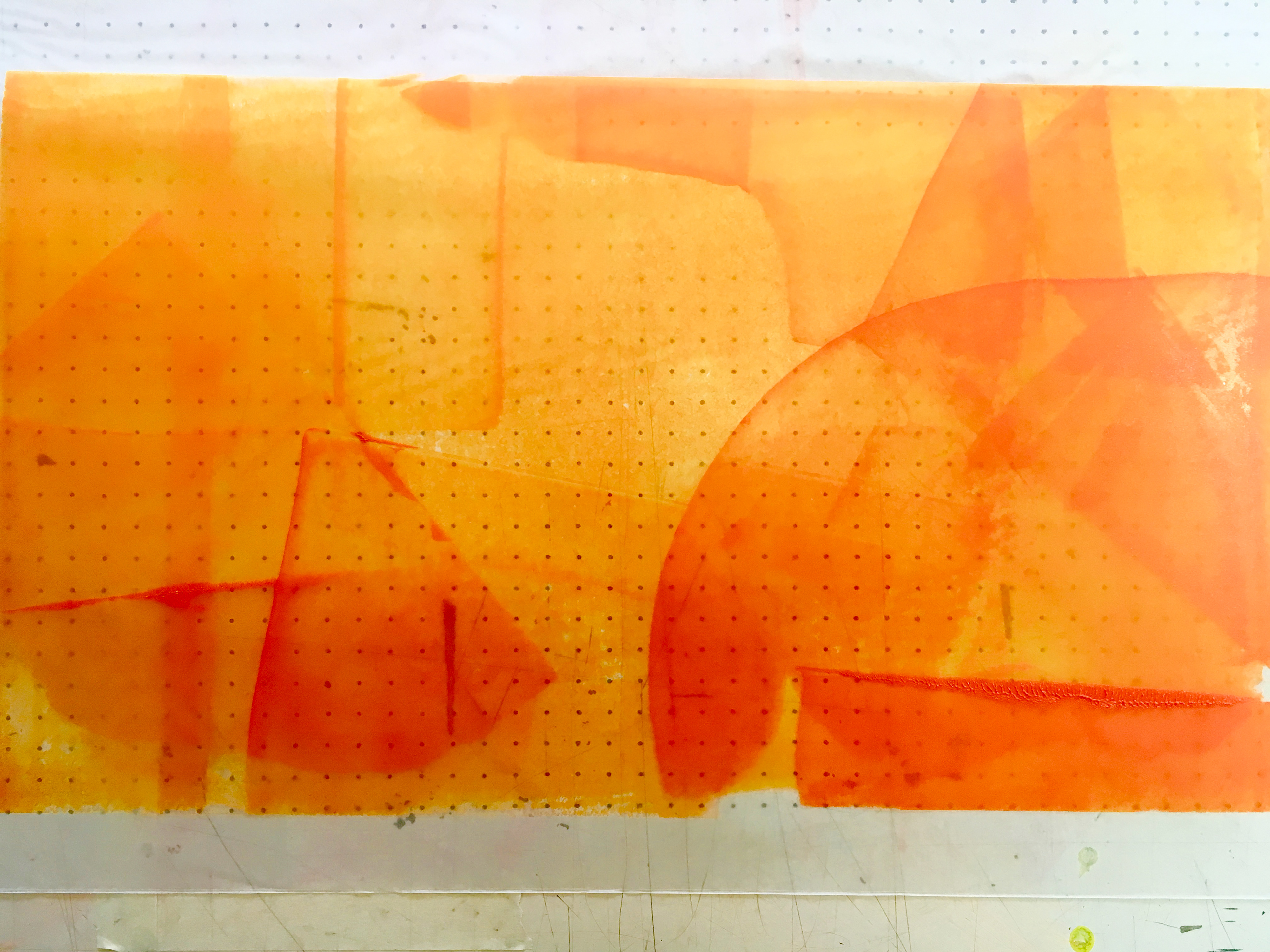
With limited space around uni, we had to move where we was planning out the sculpture and with the new move we decided to play with the new materials and dint like how they fitted within the shape and so a new shape was created to see if the materials suit.
After creating the new shape, very cubic and minimal, the materials just wasn't fitting in with the shape, so we borrowed some perplex to test and they completely worked (yet can't use them as too expensive).
It was decided that the shape was to like the artist Mondrian and sadly didn't conveying the message we wanted to.
ARTIST -Katharina Trudzinski
http://www.katharinatrudzinski.de
When looking at the scaffolding an I used the surrounding furniture to give colour and pattern - (yellow roller) acting as yellow stripes for visualisation. This reminded me of this artist with her sculptural installations which are 3D collage visuals.
My photo of Jyll Bradley's 'Dutch/ light"
ARTIST - Jyll Bradley
https://www.turnercontemporary.org/exhibitions/dutch-light-for-agneta-block
This work 'Dutch/Light' is a piece that is currently on at The Turner Contemporary in Margate. It really drew to me about how art can respond and directly engage to a place and change how you view it. It also grabbed my first attention for neon perspex, how the perspex glows naturally in the sun light.
Even though the shape was aesthetically pleasing it wasn't stable and so kept collapsing. The shape needed to play with using more triangular shapes for it to work.
With easter break coming up, i took the scaffolding home so could lay with creating a more stable shape and playing with it outside to see how the light works.
This new shape was more like a rhombus with moving two of the poles to connect the front section to the back (always got mohave 4 connecting points).
Thinking of colours, looking at the writing on the poles, wanted to incorporate them by changing them into a colour of the scheme (orange). Also the dots have reference to the circle shadows found from the scaffolding shadows.
I played with the materials, with in the new shape, but they still didn't work.... to big ? I decided to cut them up and think about making clusters of suspended shapes inspired from the shapes of the Cathedral windows.
I sourced these key stands to help stabilise the scaffold.
With the smaller shapes, i played with creating different compositions. After creating a few different forms i suspended them within the space. It was looking better, but thinking about capturing the shadows, wasn't sure where to hang the materials.
ARTIST - ARABELLA DORMAN
http://www.arabelladorman.com/suspended-canterbury-cathedral
A current work which is being shown at the Cathedral at the same time is 'Suspended'. This work features a similarity to our as it is suspended fragments (clothing) hung within a space of the Cathedral. It a nice link to have two works playing with similar thoughts of suspension.
There was a meeting with everyone for the exhibition to walk around the sit and go though health and safety of people works within the space. From the meeting it was agreed for the show to be moved to the next corridor, and so the meant we were going in a new light direction.
With the new corridor, there wasn't any clear archways, so we had the pillars to consider in our image.
I was started to get concerned that the shape we had created wasn’t suitable to create the most effect with shadow catching, even though the shape was aesthetically pleasing.
I learnt how to think of the image as a whole; how it is going to look different in its location, other than the white walls in which we are playing with now.
With these new factors to consider we decided that to capture the most light the sculpture needed to cascade down.
Taken the scaffolding outside. The shadows cast on the flow were intriguing.
With the measurements gathered from the cathedral I created a temporary platform which replicated the height of the archway. We knew the shape had to be a rhombus to be stable and I had decided that it need to be taller at the back and shorter at the front to catch the shadows. Also the shape became a cornered shape to capture the sun as it flows over the cathedral from left to right.
Evie came round for a day for experimenting with how to hang the acetate on the scaffolding. We played with the shapes and how they looked with in the framework still didn’t look right. We also played with the yellow material I gathered from a scaffold site, the shadows created was lovely, but on the frame it was looking a bit clumsy.
The more we started to play, the more I started to realise that piece was never going to be a finished piece, it will constantly be a research tool in playing with materials, light and shadows. But for the actual exhibition the piece need to focus more on the stain glass point for the context and aesthetic appeal to the type of customer who visit the Cathedral.
The smaller pieces of acetate wheres still looking to clumsy. We decide to research suspended glass and find works that have played with this idea and see how they achieved there look.
We noticed that from most the work, the shapes were smaller and more of them to create a more pleasing effect. So we decided to cut the shapes up smaller, using the images of the stained glass to give us reference how to cut them.
We created strings of coloured acetate.
ARTIST - BRONWYN LACE
http://www.bronwynlace.com/2012/05/19/gods-finger-2012/
Her work 'Gods Finger, 2012' features suspended glass on clear wire. Interestingly she plays with light, like we are by fixing the suspended wires with in frame of a window. She was asked directly to respond to the site of the gallery, which is also what me and Evie have don't with the site at the Cathedral.
We had a quick play of creating a stained glass panel before cutting them up smaller. With the shape's tallest part being in the middle back, reminded of a standard shape of a church and so seemed fitting to fill that area with a stained glass panel. But the whole sculpture was empty with using flat pieces so we did go ahead to create our strings of acetate.
After another visit to the Cathedral and saw how the scaffold material used to catch debris was catching the lights coming from the windows.
I liked the white, transparent material, so we decided to play with the same material from my other project 'nothing with nothing' (polyester screen printing material).
A nice effect was happening with the colours and shadows. The material also acted like a pathway for the eye to follow round the framework.
With these strings we were able to play with many compositions and that the strings had to be strung high to catch the sun. With these new strings it meant we could easily create the piece on the day of set up and place them in favour of capturing the light on the day.
We were happy with the new acetate, but wanted to keep the materials and everything so we had a choice on the day of set up as we didn't know what any of it would look like in the setting .
The sculpture will directly response to the site on the day, with choosing what materials work with the surroundings and how the light is on the day
Some extra material responding to the metal materials used to walk on in the scaffolding. Cut out circular holes in the wood. Played with many positions to place the wood to gather the light.
I have a sketch book which labels out all the different shapes and designs, trying to figure out how to place materials on them.
The orange type where all to be front facing.
With the sculpture I added labels to each of the poles and drew a diagram to reference too when setting up. From our previous experience in taking down and setting up the poles, we created them into sections (pole A,B,C,D) for a-joining poles to stay too.
Another artist who played with light and refracting is Daniel Buren.
His work plays with similar interests that I'm starting to explore which is about responding to the space in which the art is going to be placed.
I created a sketch book labelling out all the different shapes and designs i have created to i could compare the shapes against each other. It helped me figure how i could play with the materials on the shapes.
The media
Poster
Sam Turff came up with the basis of the poster- background image and layouts. Ken came up with the name and we all agreed. From seeing the poster i understood she had created a corner and so wanted to incorporate the title into this, otherwise it was just floating in the top corner. Also with the shadows, i suggested for the shape to be arched to represent the location of the work. Also wanted to tone down the colours to be more location specific, as they were too bright before.
With the press release, Ken mainly took charge and I added a few extra changes to his work.
With regards to the press release, due to the fact the communications with the Cathedral were delayed at times with responses. This lead to the release being sent to late and so no press was released. These were the organisations contacted:
INDEPENDENT ON LINE
HAVE YOUR SAY (KENT BASED)
ITV NEWS MERIDIAN
INDEX MAGAZINE (KENT BASED)
KENT GAZETTE
KENT MESSENGER
SOUTH EAST TODAY - BBC
We printed off around 30 posters and attached them all around uni. We also got an email sent round in the uni system to advertise our work.
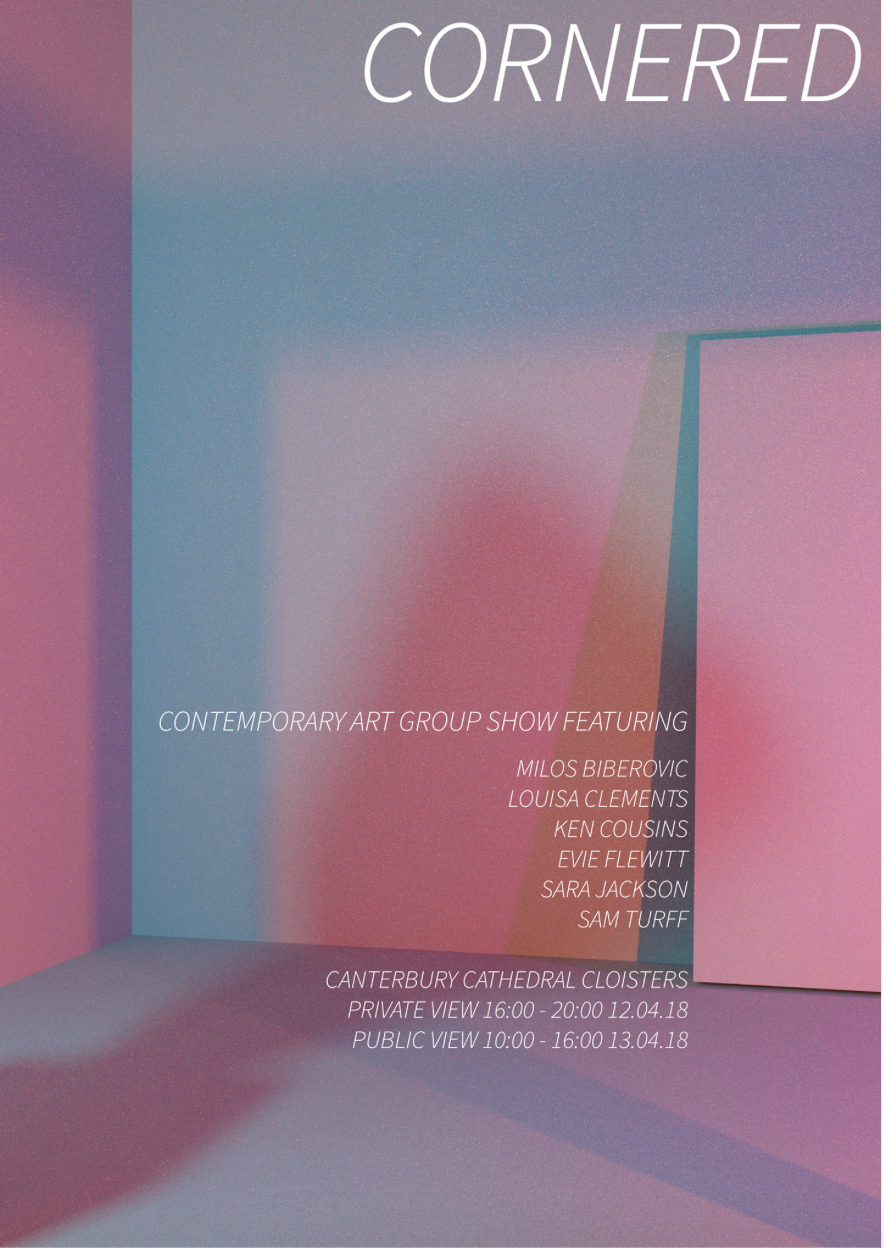
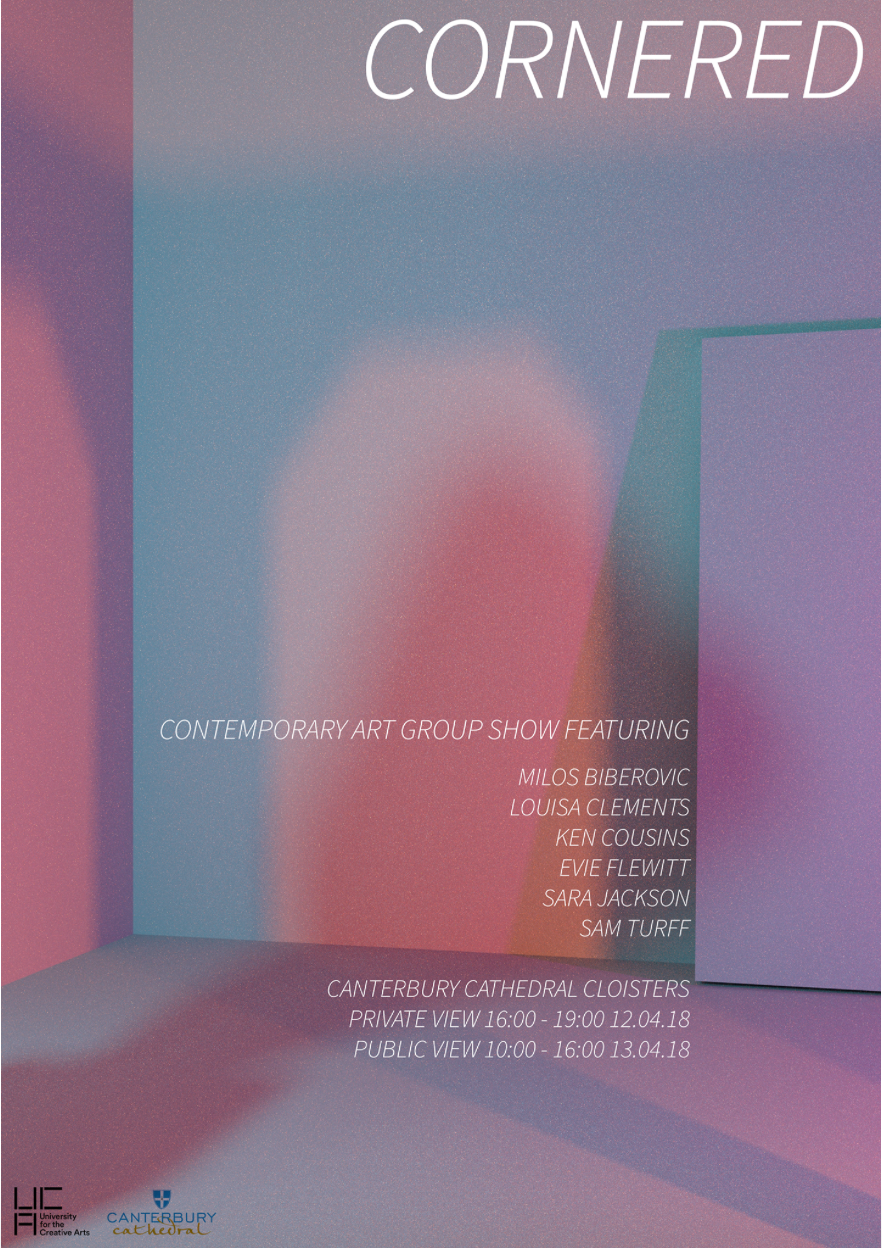

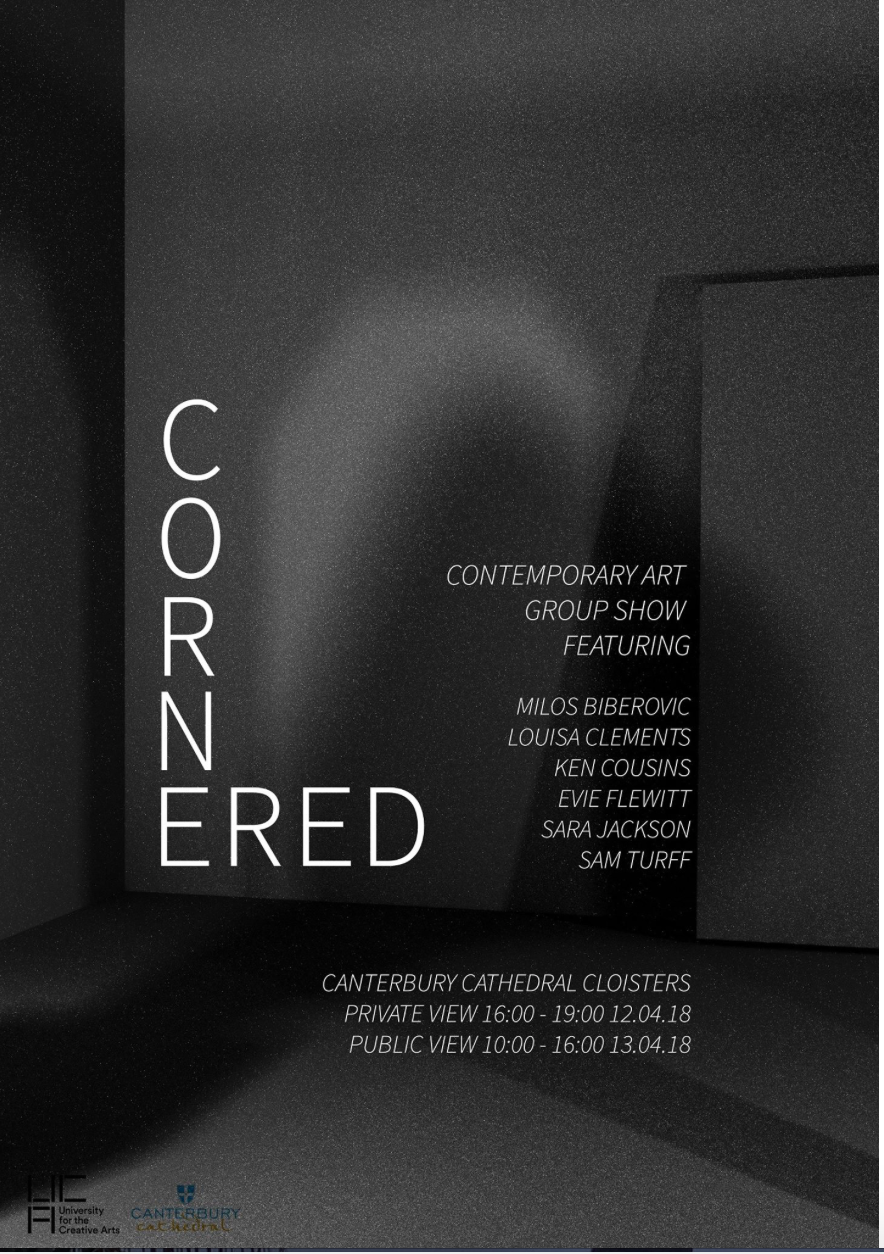
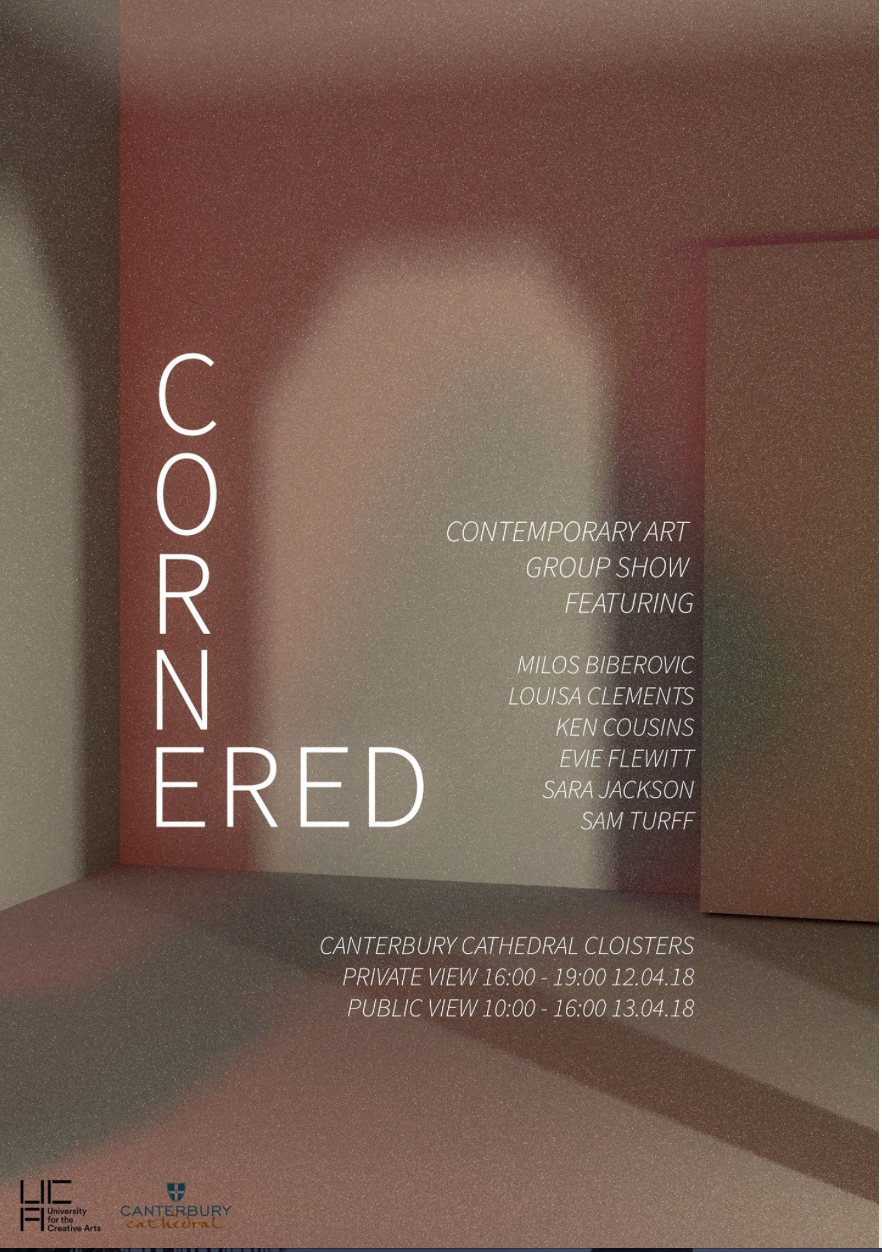
Day of set up
On the day we transported to the Cathedral in the morning and we all had to maneuver our work to the place. We all set up our pieces in the morning, but there was still some maneuvering to take place after the set up because other factors (Blocking pathways, security and manouverals). Where Ken’s work was planned to be exhibited the Cathedral decided half way through the day that they needed the pathway clear. Ken’s work had to be moved down the corridor and so the exhibition wasn’t ‘Cornered’ anymore, which did get picked up from the audience. In the background, towards the end of the corridor was a chairlift and we didn’t realize that this equipment couldn’t be move and so that was another obstacle in our exhibition.
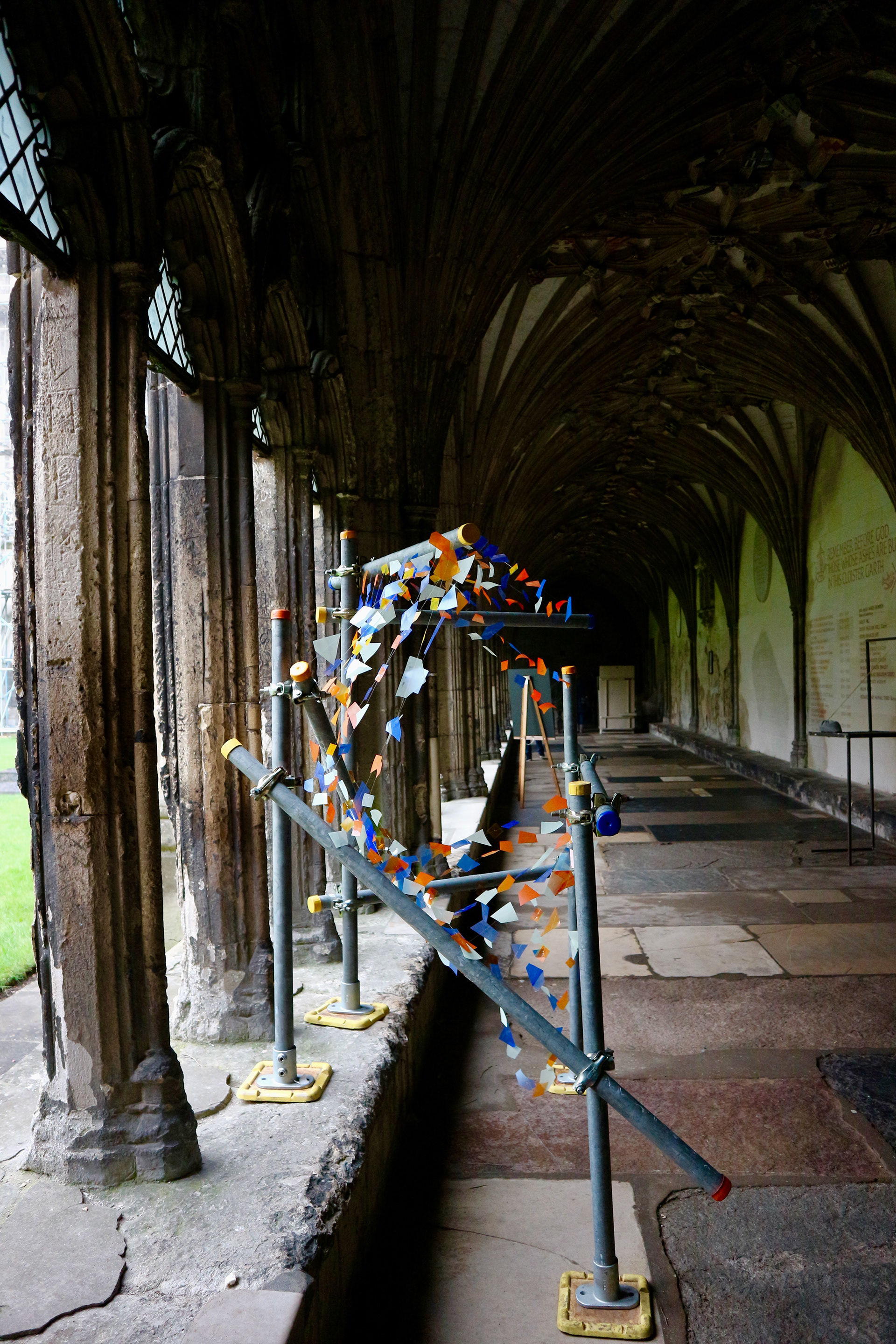
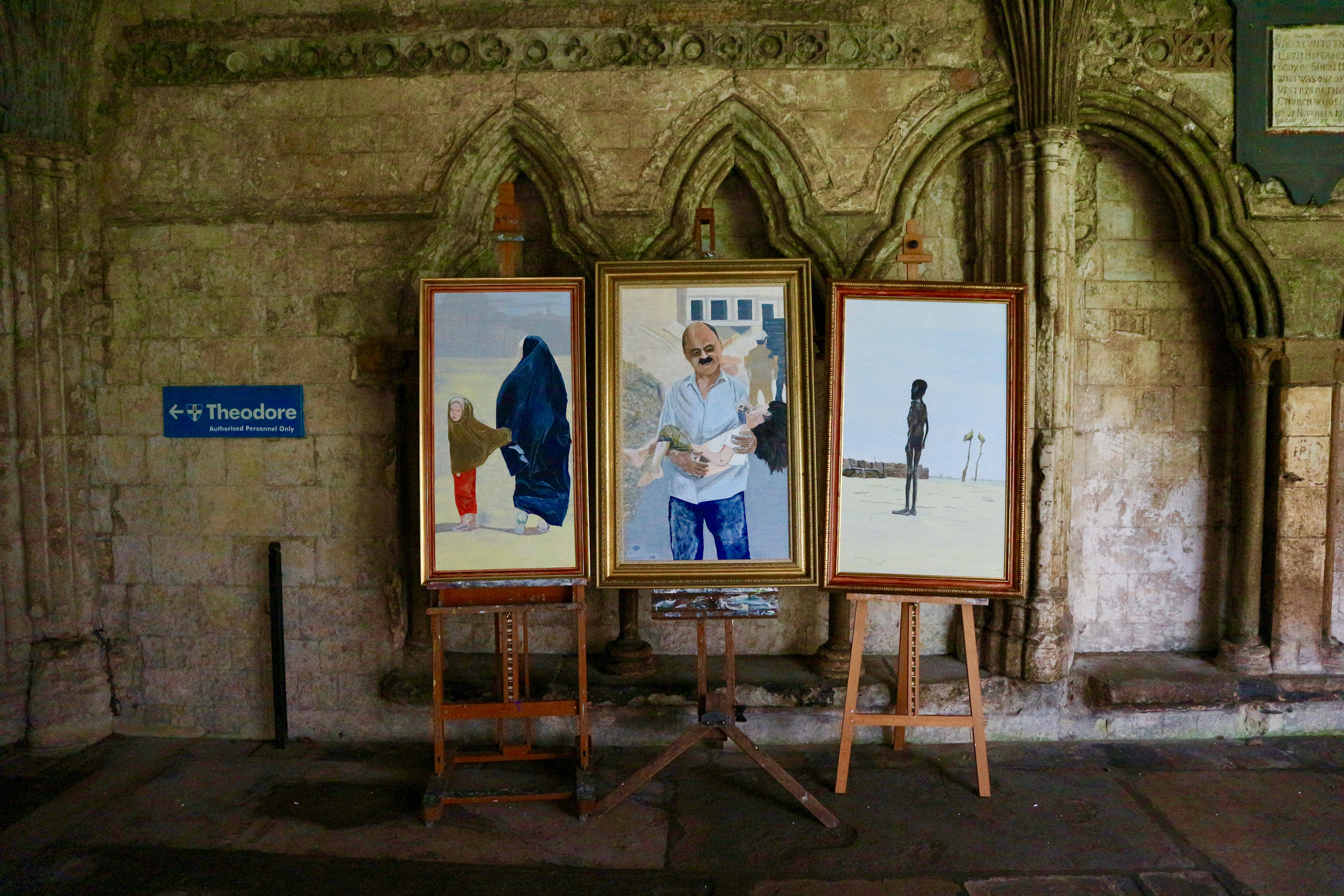
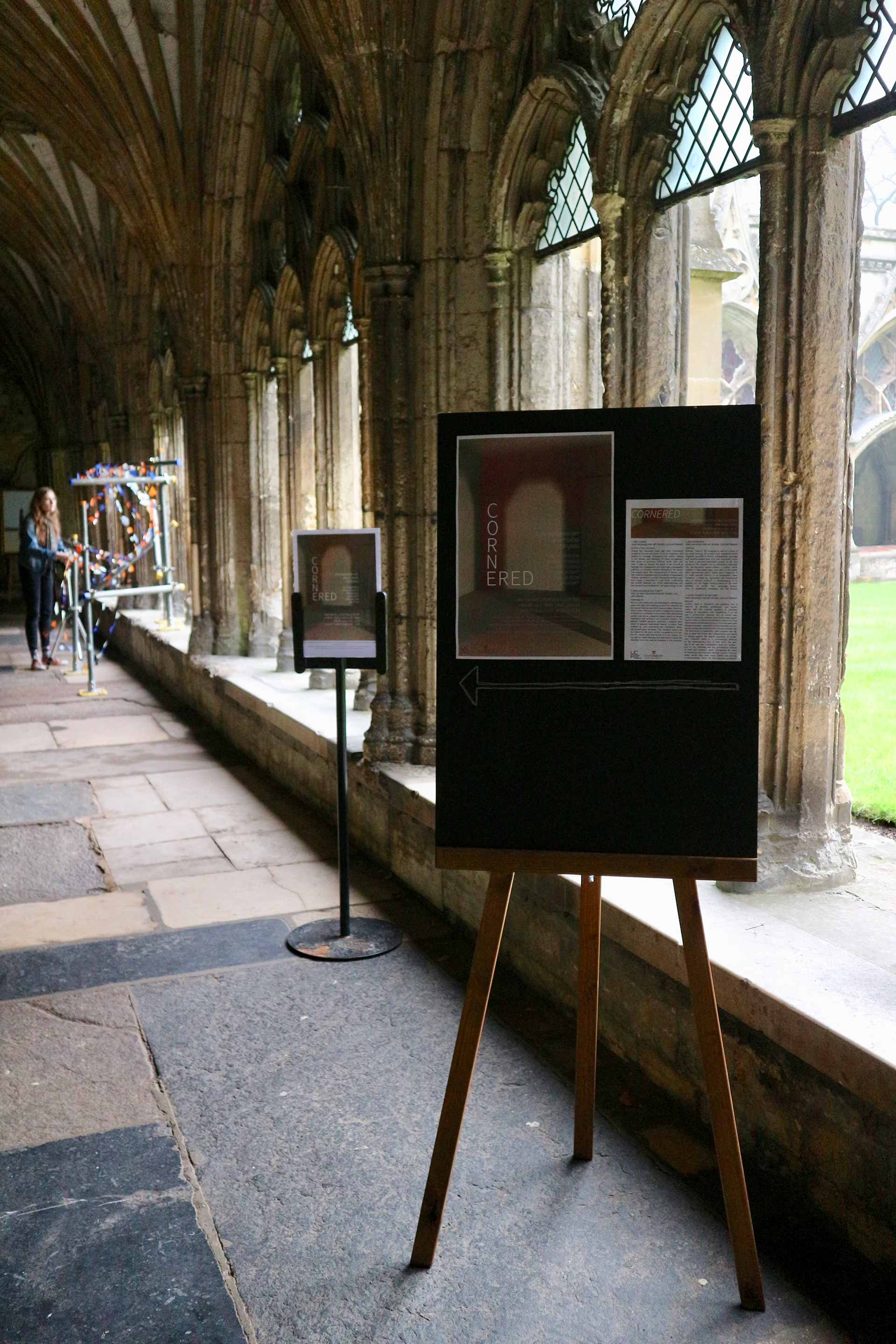
When taking down the exhibition, we had to take down earlier than expected due to the works men wanting their removal equipment back.
When we took down our piece, we hanged the acetate on the arches for ease and soon discovered we were creating an alternative piece.
From this all I learnt to allow my work to be flexible when exhibiting in an outside environment as there are many uncontrollable factors you have to deal with.